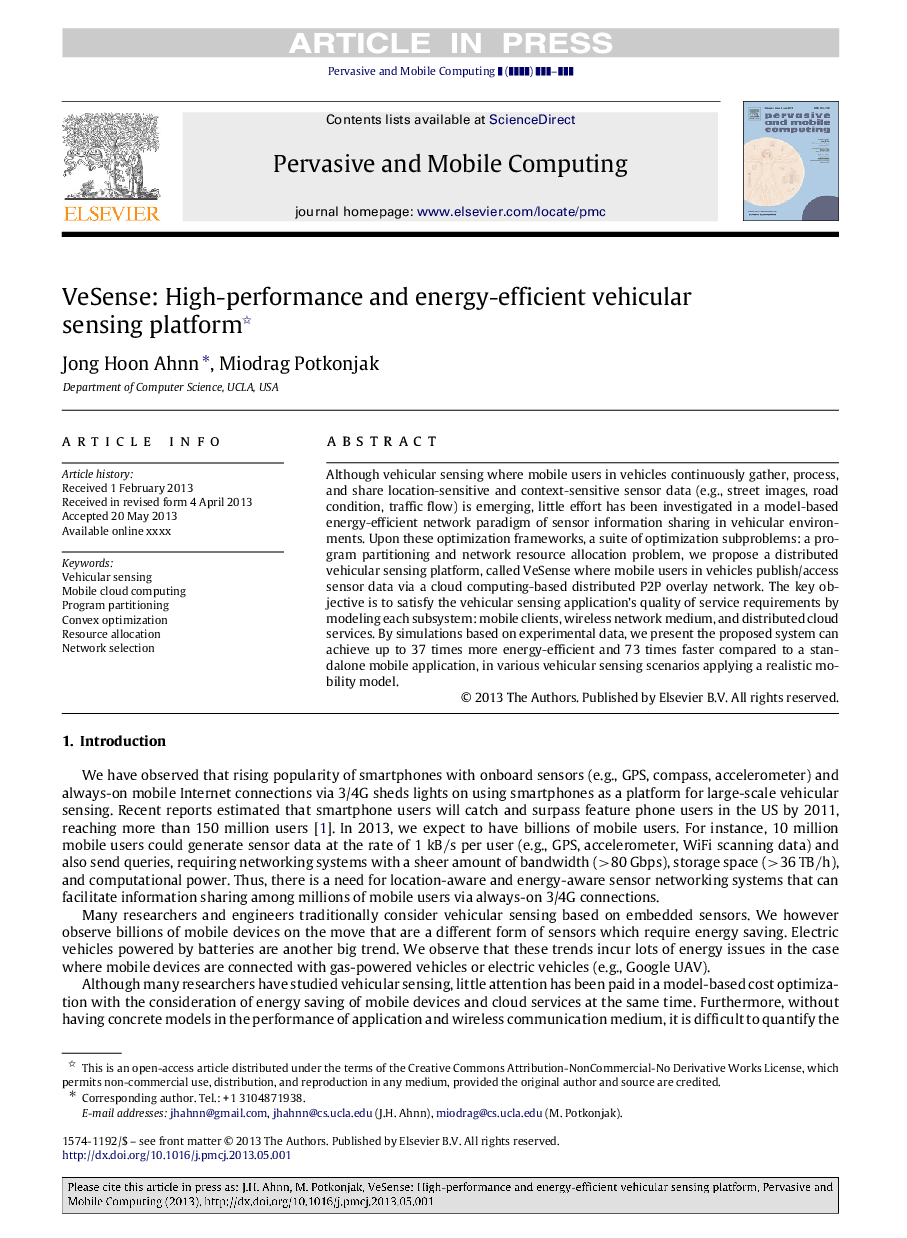| Article ID | Journal | Published Year | Pages | File Type |
|---|---|---|---|---|
| 6888834 | Pervasive and Mobile Computing | 2014 | 11 Pages |
Abstract
Although vehicular sensing where mobile users in vehicles continuously gather, process, and share location-sensitive and context-sensitive sensor data (e.g., street images, road condition, traffic flow) is emerging, little effort has been investigated in a model-based energy-efficient network paradigm of sensor information sharing in vehicular environments. Upon these optimization frameworks, a suite of optimization subproblems: a program partitioning and network resource allocation problem, we propose a distributed vehicular sensing platform, called VeSense where mobile users in vehicles publish/access sensor data via a cloud computing-based distributed P2P overlay network. The key objective is to satisfy the vehicular sensing application's quality of service requirements by modeling each subsystem: mobile clients, wireless network medium, and distributed cloud services. By simulations based on experimental data, we present the proposed system can achieve up to 37 times more energy-efficient and 73 times faster compared to a standalone mobile application, in various vehicular sensing scenarios applying a realistic mobility model.
Related Topics
Physical Sciences and Engineering
Computer Science
Computer Networks and Communications
Authors
Jong Hoon Ahnn, Miodrag Potkonjak,
